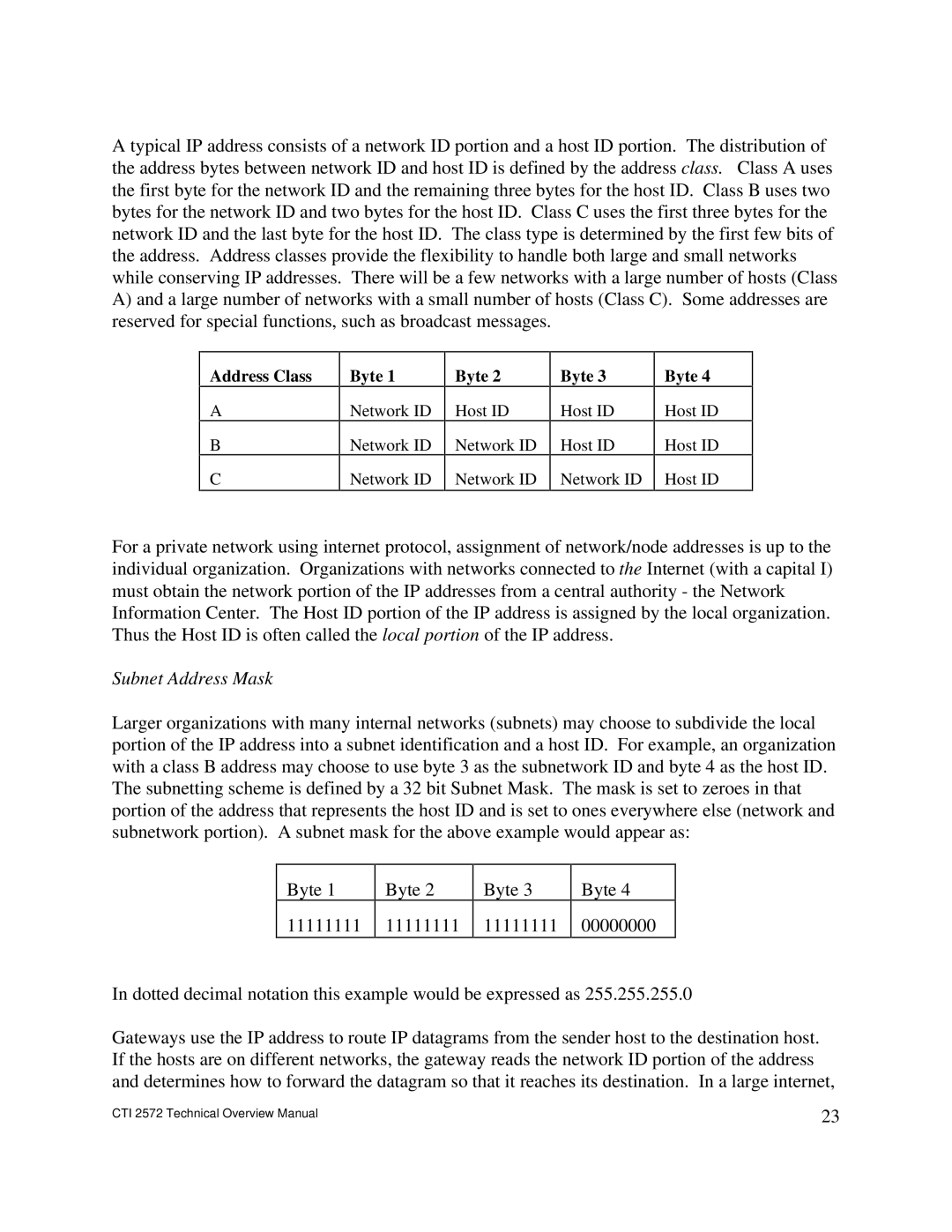
A typical IP address consists of a network ID portion and a host ID portion. The distribution of the address bytes between network ID and host ID is defined by the address class. Class A uses the first byte for the network ID and the remaining three bytes for the host ID. Class B uses two bytes for the network ID and two bytes for the host ID. Class C uses the first three bytes for the network ID and the last byte for the host ID. The class type is determined by the first few bits of the address. Address classes provide the flexibility to handle both large and small networks while conserving IP addresses. There will be a few networks with a large number of hosts (Class
A)and a large number of networks with a small number of hosts (Class C). Some addresses are reserved for special functions, such as broadcast messages.
Address Class
A
B
C
Byte 1
Network ID
Network ID
Network ID
Byte 2
Host ID
Network ID
Network ID
Byte 3
Host ID
Host ID
Network ID
Byte 4
Host ID
Host ID
Host ID
For a private network using internet protocol, assignment of network/node addresses is up to the individual organization. Organizations with networks connected to the Internet (with a capital I) must obtain the network portion of the IP addresses from a central authority - the Network Information Center. The Host ID portion of the IP address is assigned by the local organization. Thus the Host ID is often called the local portion of the IP address.
Subnet Address Mask
Larger organizations with many internal networks (subnets) may choose to subdivide the local portion of the IP address into a subnet identification and a host ID. For example, an organization with a class B address may choose to use byte 3 as the subnetwork ID and byte 4 as the host ID. The subnetting scheme is defined by a 32 bit Subnet Mask. The mask is set to zeroes in that portion of the address that represents the host ID and is set to ones everywhere else (network and subnetwork portion). A subnet mask for the above example would appear as:
Byte 1
11111111
Byte 2
11111111
Byte 3
11111111
Byte 4
00000000
In dotted decimal notation this example would be expressed as 255.255.255.0
Gateways use the IP address to route IP datagrams from the sender host to the destination host. If the hosts are on different networks, the gateway reads the network ID portion of the address and determines how to forward the datagram so that it reaches its destination. In a large internet,
CTI 2572 Technical Overview Manual | 23 |
